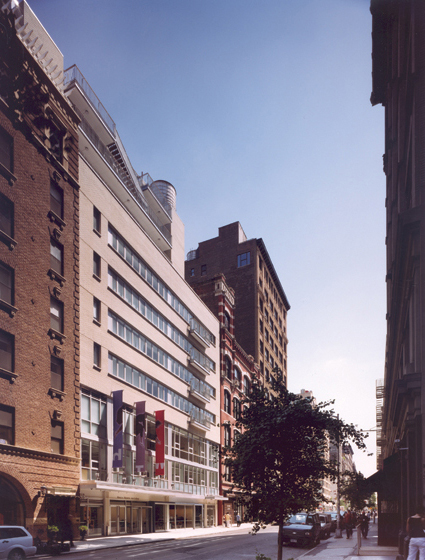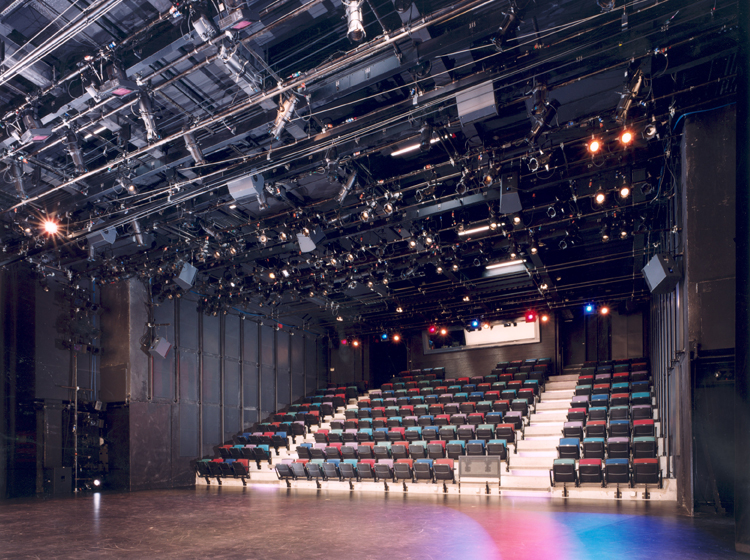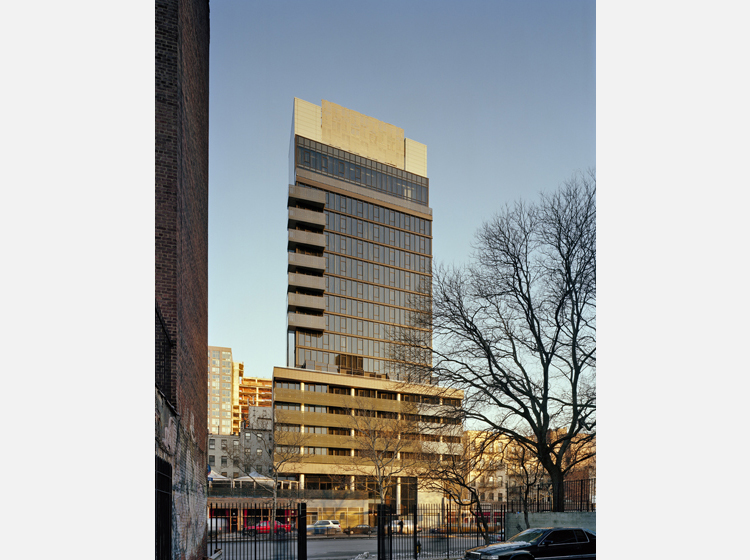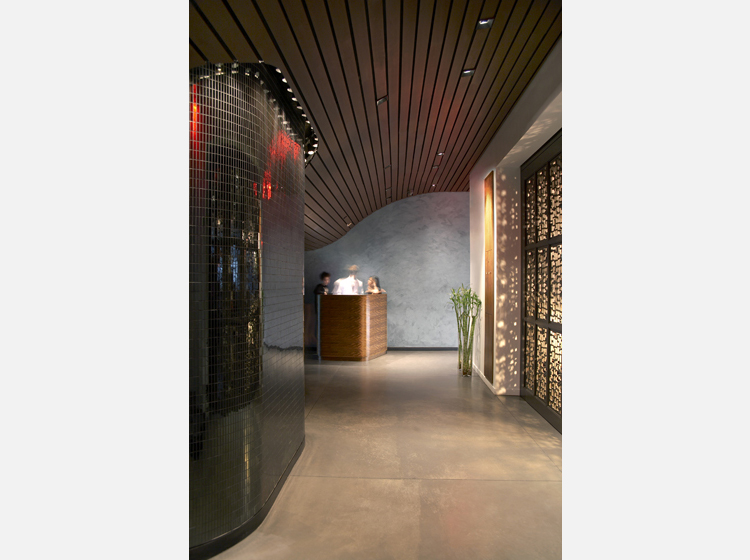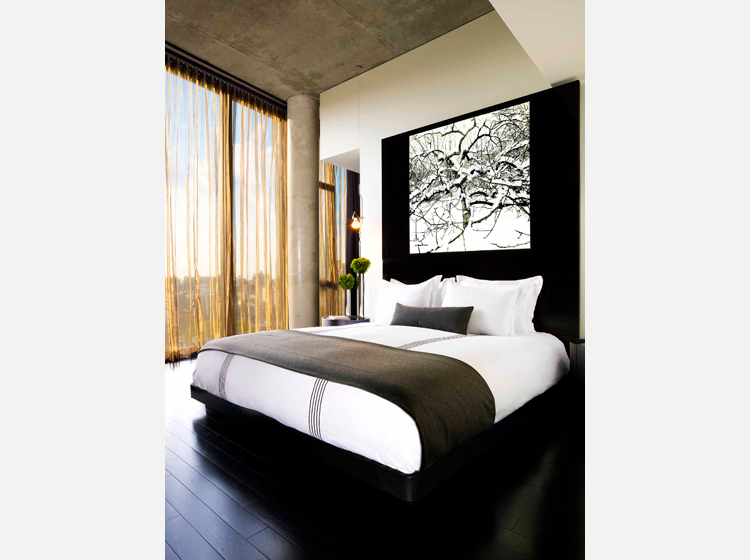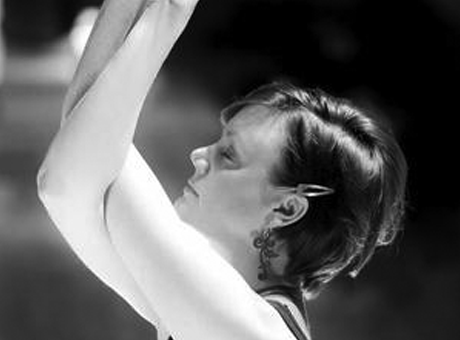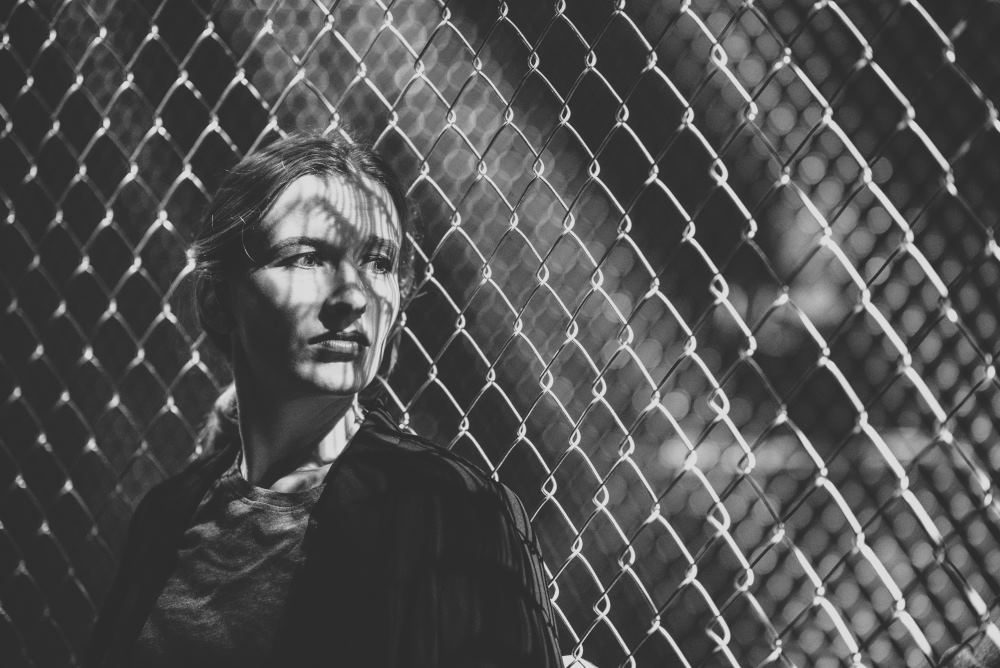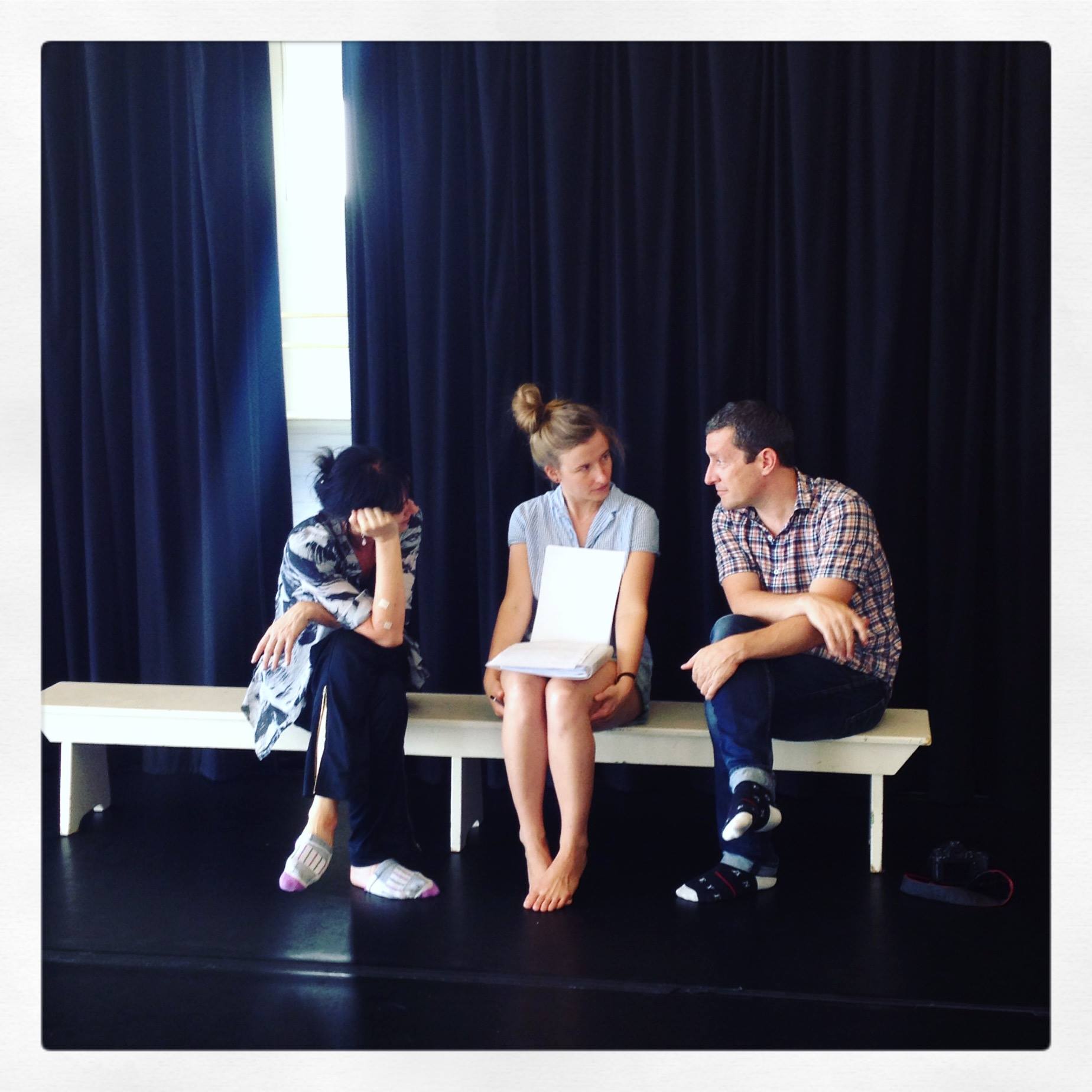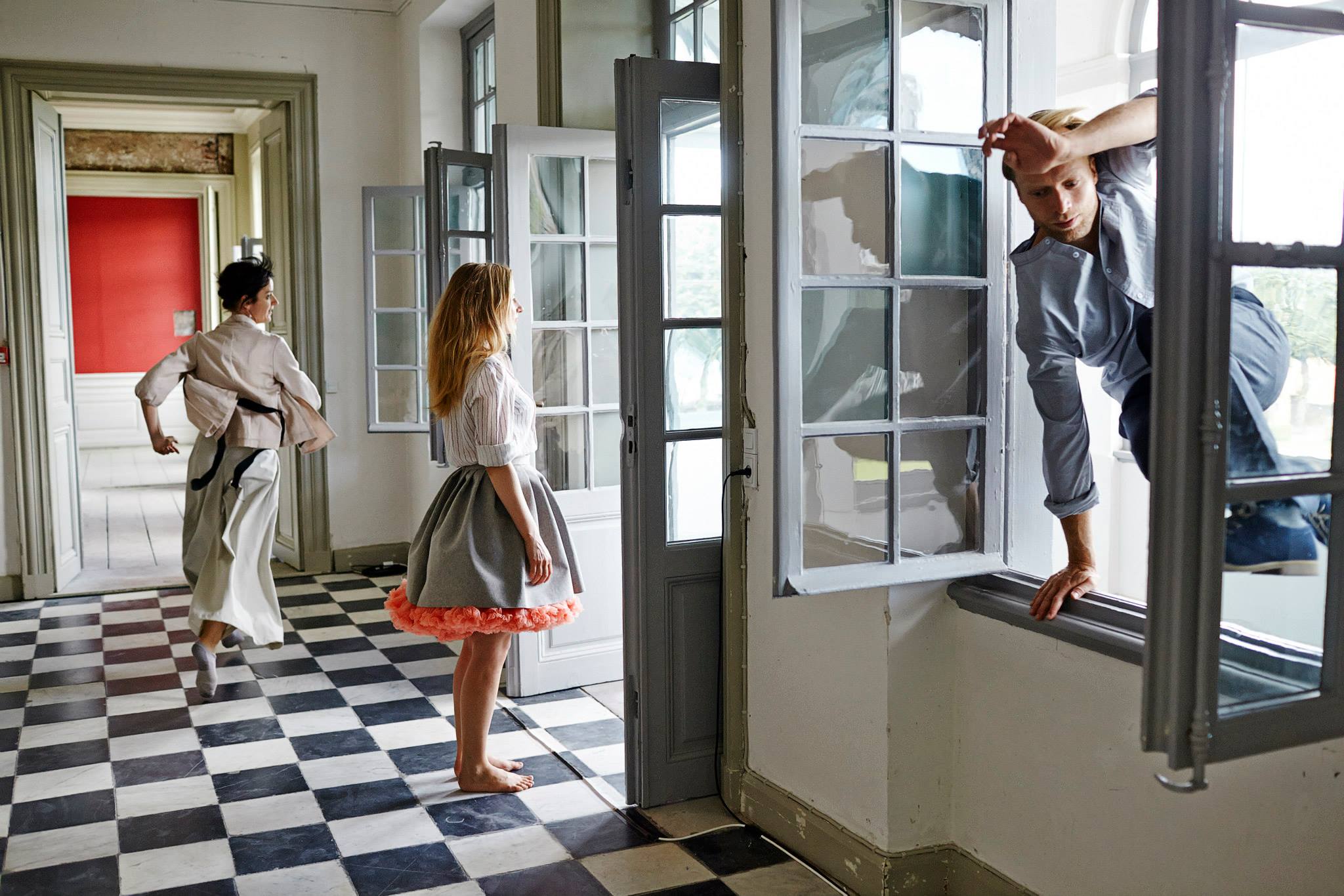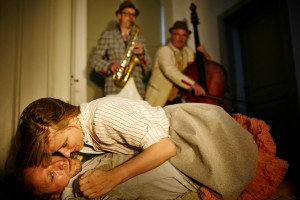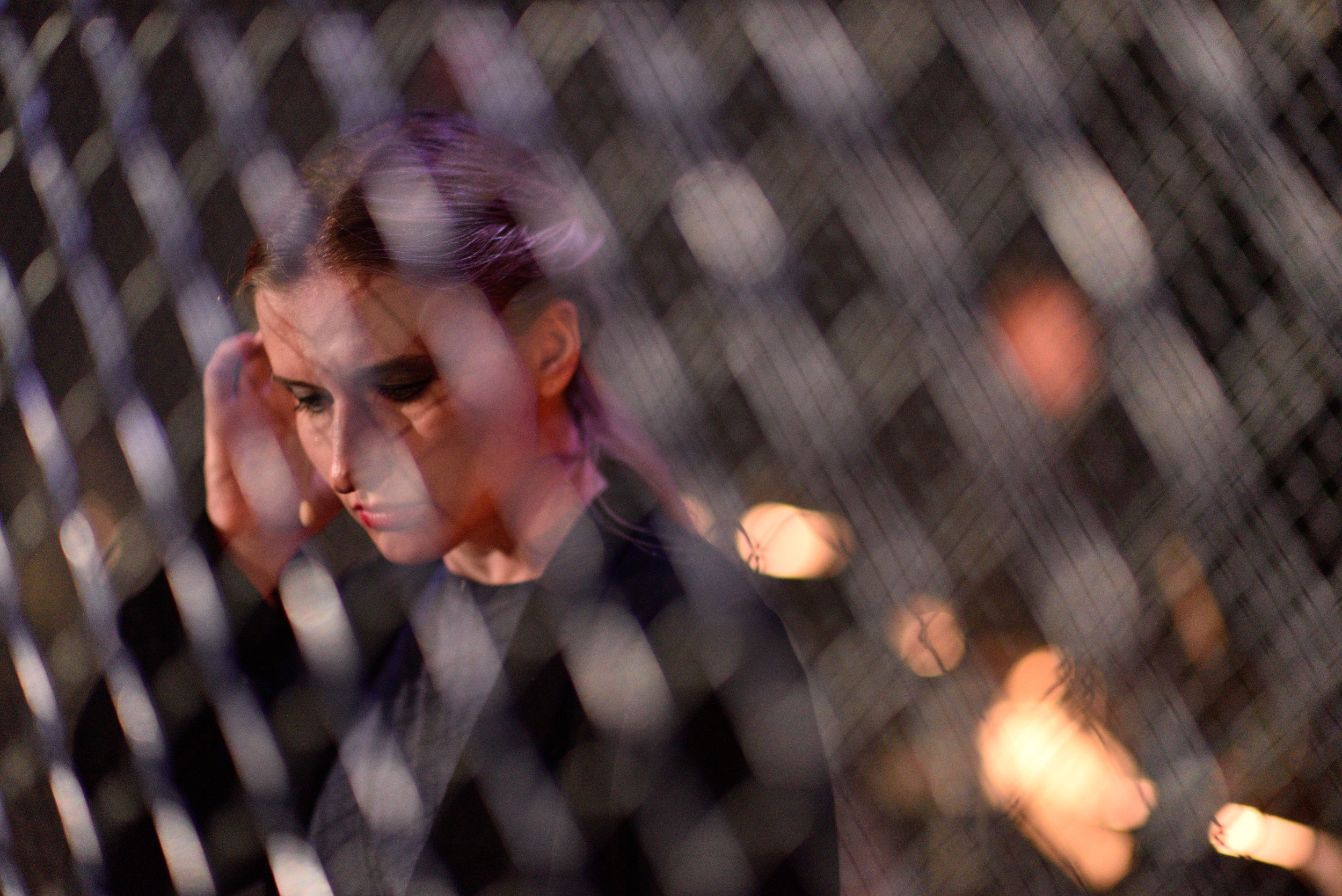Heading towards our 4-year anniversary. /
A look back at our first production "The Wedding" as we are heading towards our 4-year anniversary!
How quickly time flies when you are doing exciting and relevant work with amazing artists and designers.
Here is to the next four years of great art making!
We are participating in Love Utah Give Utah on March 30th. /
If you are excited about the work that we do, then please consider donating towards the programs that we offer HERE!
Thank you!!
An image from last year's Space As Collaborator workshop.
Desert Shore - details coming soon. /
Graphics by Cameron Hooyer.
SPACE AS COLLABORATOR 2017 /
Graphics by Cameron Hooyer. Photo by David Newkirk.
NE PLUS ULTRA: MIME ARTIST YASS HAKOSHIMA /
Yass Hakoshima in "Maze". Photo courtesy of C. Wang.
Yass Hakoshima began his career while dancing with the Yokoyama Ballet troupe in Japan. His initial success led him to the United States, where he studied modern dance with Erick Hawkins and mime with Etienne Decroux. In the late ’60s Hakoshima made his stage debut in New York, and thereafter embarked on a 10-year tour of the United States, performing in over 400 cities in 49 states.
In 1976, he established the Yass Hakoshima Mime Theatre, incorporated as Danmari Ltd. He has received awards from the National Endowment for the Arts, New Jersey State Council on the Arts, Suntory Foundation, Geraldine R. Dodge Foundation, Soros Foundation, Deluxe Corporation Foundation, and from many other corporations and individuals. Mr. Hakoshima is now an international favorite, touring from New Zealand to Montreal, and Hong Kong to Berlin.
I have known Yass and his wife, the dancer Renate Boue for close to 20 years now and am completely inspired by their endless creativity and pursuit of artistic excellence. Yass is an extraordinary performer with an incredible amount of stamina and curiosity for the world around him.
Please enjoy.
Charlotte Boye-Christensen
TELL US A LITTLE BIT ABOUT YOUR BACKGROUND; WHEN AND WHY DID YOU KNOW THAT YOU WANTED TO BECOME A MIME ARTIST?
When I was ten or twelve years old, I was a good story teller. I explained stories in a convincing manner to my classmates and friends. In fact, I enjoyed doing this myself. During my life in Tokyo 1955-58, working at Tokyo Keikan, I took daily ballet classes with the Haruki Yokoyama Ballet and mime classes with Hieronobu Oikawa, who had just returned from Paris, where he had done studio work under Etienne Dercroux. While the Yokoyama Ballet Co. had been touring in Hokkaido for a 3-week engagement, I danced in “Coppelia” and “Swan Lake.” As you can imagine, we always performed on large stages with wonderful audiences. Somehow I got the idea to try out some of my created mime pieces. During the intermission after the first performance I proposed this to the artistic director and to my surprise, the offer was accepted. I would be performing my own choreographed solos! Because at that time very very few artists were showing European style mime, only at a few occasions Japanese people were able to see mime when they were watching European movies. Therefore my appearances were very unique at that time for Japanese audiences to see mime in a live performance, and it became a great hit during the Hokkaido Ballet tour. On a big stage, one person doing something called Mime was a great challenge. During that time I was also reading a lot of literature and constantly searching Western theatre history, and finding Western art forms, specifically about the art of mime, which at that time was very little known in Japan. Twice I was able to see Marcel Marceau perform in Tokyo, which confirmed my vision of getting more and more interested in the art form of mime.
WHAT DO YOU CONSIDER YOUR BREAK-THROUGH PART AS A MIME?
After many years of choreographing numerous performance works, I realized that one of the popular mime styles, the so-called 20th century classic short vignette, which is so beautiful and absolutely stark, sharp, direct and showing human expression. It holds a poignant deep meaning like a powerful black and white calligraphy. However to exist among the other “big brothers” like opera, symphony concert and many other types of theatrical forms, which use enormous visual effects like stage sets, costumes, fantastic songs, dialogues, all of which can over-whelmingly impress audiences with enormous excitement. Mime on the other hand, and especially soloist performing on the big stage, without song, no talking, just demonstrating body expression of everyday gestures in life, was not enough! I found one clue: ”visualization of music” could help me to step out of the short vignette style. I concentrated on 15 to 20 minute scenes of short stories or events, well edited, and still keeping a poetic sense and deep meaning. I listened to selected music over and over until the entire score was built into my body. I enjoyed it so much because I finally found it: Freedom of Expression!
HOW DO YOU CREATE A CAREER FOR YOURSELF AS A MIME AND WHERE DO YOU FEEL THAT THE BIGGEST AUDIENCE IS FOR YOUR WORK?
Yass Hakoshima in "Spell". Photo courtesy of Johan Elbers.
My career began originally in Europe when I lived in Germany and gradually began to create evening length programs that I could offer to various presenting organizations, such as universities, arts centers, theatres etc. When I moved back to the USA in 1966, I had my NYC debut at the 92nd street Y and also at Jacob’s Pillow Dance Festival, which were attended by several representatives of artist agencies. I was signed up with one agency. I stayed with them for over ten years, touring all over the USA in all states but one! It was a very hard touring time. Sometimes I toured in my own car, sometimes I flew, sometimes taking a bus! It was a very strenuous period, with one-night stands, visiting hundreds of colleges and universities, community concerts,festivals.
In order to make ends meet I had to be my own stage manager, lighting designer, performer, choreographer, music director, costume designer, mask maker, props creator etc etc.
All these performances were mostly one-night-stands, including also one- or two-week residencies. Eventually, in 1976, other agencies became interested in my work and I was represented by an International agency (Kazuko Hillyer International) in New York for 13 years. Now I would be touring to larger festivals and theatres around the world.
Simultaneously I would also work with international agencies in Europe, as well as in Asia. And I was touring practically all year-round. The biggest audiences for my work are definitely in Germany and in Taiwan because I had so many performance tours in these countries. Also audiences in Australia and South America were equally receptive and understanding.
I SEE YOU AS SUCH A POWERFUL STORYTELLER - CAN YOU TELL US A LITTLE BIT ABOUT YOUR CREATIVE PROCESS. HOW TO CREATE A CHARACTER? DOES INTUITION PLAY A ROLE IN YOUR PROCESS?
Mime is the art of creating a world of reality. The performer re-creates the world around him as well as represents and expresses his own inner world for others to see. The “outer” world contains objects, people, animals, and organic life of all sorts, which become the sum of the performer’s environment. The “inner” world consists of his/her own feelings, thoughts, impulses and dreams. Illusion can be created objectively. Objective mime creates objects and environments around you. In subjective mime, you become the object itself, such as marionette, tree, flower or eagle.
One of the most important aspects of a mime performance is the creation of illusion. When a mime creates a fantasy — something that is there when it really is not - that is an illusion. When you see a mime perform, you will see many illusions - invisible objects such as a wall, a door, a chair, or movements such as the blowing of the wind, the rocking of the waves of the sea, an eagle flying in space.
TELL US A LITTLE BIT ABOUT THE HIGHLIGHTS OF YOUR CAREER SO FAR.
Yass Hakoshima in "Melan".
One of the most recent highlights of my career has been my annual national tours in Taiwan, twelve times from 1983 to 2003. The Taiwan audiences named me “Shan Tao An” (Chinese for Yass Hakoshima). One of the most important stages I appeared on during my professional career was one week of performances at the Taiwan National Theatre, a 3000 seat fantastic theatre and wonderful audiences. Opening my career as professional artist were two special theatres in Germany: in Berlin the Akademie der Künste and the beautiful Rococo style Markgrafen-Theater in Erlangen. My first New York performance was at Kaufman Hall at the 92nd street Y and the same year (1966) I appeared at the Jacobs Pillow Dance Festival in a program with Edward Vilella and Carmen De Lavallade.
WHAT DO YOU THINK IS THE BIGGEST MISCONCEPTION ABOUT MIME THEATRE?
Mime is simple body language to express a story or essay, events, illusions, crazy fantasies, fables or daily street scenes, dreams, etc. These are raw materials for artistic choreography. However, how to break it down to simple body language format is the crucial point.
Marcel Marceau created most obvious and very common scenes of every-day-life in a poetic way, with comedic nuances and great facial expression. His creations were easy to understand.
However the simple way to express in an artistic way is always very difficult. After Marceau’s worldwide success from 1976 until around 2006, street mimes appeared on every corner in the USA to entertain and amuse audiences in comedic acts.
Of course, everybody enjoyed watching their plays and comedic acts. However those mime artists did not give the public a sense of the ART FORM of mime. Gradually people left from those acts and labeled these performers white-faced meaningless entertainers because it is so easy to start moving around without much training or experience, special talent or serious artistry. Anybody can copy actions in a white face, and therefore people gradually lost interest in the art of mime. The public does not know the various styles of exciting, high level of classic, abstract mime, dramatic or comedic mime performed in the theatre by artists who have been trained for many years, who can compete with other art forms like opera, spoken theatre etc. When we ask people "what is mime,” people usually answer immediately, “I know it, a white-faced street entertainer or comedian! They are so funny and cute!” Is that all?
Yass Hakoshima in Melan. Photo courtesy of Raul Gil.
I have met so many people during my touring time, and at that point I thought seriously that I have to teach and educate people about the ART of mime. This encompasses the comedic act, to give laughter for a complete opposite situation, such as in the tragic drama of human behavior.
WHO ARE SOME OF THE PEOPLE WHO HAVE INSPIRED YOU IN YOUR WORK AND WHY?
Composer George Crumb, whose music has inspired me tremendously for many of my recent works. Stefan Odry, photographer in Germany. Akira Kurusawa, film director. Jean Louis Barrault, actor/mime. Comedie Francaise, Jules Dassin. Film director, Vaslav Nijinsky. Igor Stravinsky. All of these have such explosive, artistic, creative energy, and yet they are very human.
WHAT DO YOU THINK ARE THE THREE MOST SIGNIFICANT FEATURES A GREAT MIME HAS TO HAVE?
A. Creative power to submerge into the concrete illusion or fantasy world.
B. Vivid memory – memorable, detailed events that the artist encountered throughout his/her life. (The power to submerge into your illusional world).
C. A physically and spiritually completely well-trained body.
Yass Hakoshima in "Black Angel".
WHERE DO YOU LOOK FOR INSPIRATION?
Street scenes, daily events, films, video, museums, books, music, photographs.
YOU HAVE SUCH AMAZING COMEDIC TIMING, YET YOU ALSO MANAGE TO DO MORE DRAMATIC ROLES, WHAT DO YOU PREFER AND WHY?
Since 2001 I put all my energy and past valuable experiences into dramatic, abstract work, accompanied by music (mostly live music) and simple costumes, masks, sculpture and paintings. Adding my choreography, creating multi-disciplinary arts projects.
This is what I thoroughly enjoy!
WHAT COUNTRY IN THE WORLD DO YOU THINK HAS THE LONGEST AND MOST APPRECIATED HISTORY OF GREAT MIME?
Italy, France, China, Japan, India.
IF YOU HADN'T BECOME A MIME WHAT PROFESSION DO YOU THINK YOU WOULD HAVE EXCELLED IN/AT?
My mother was an opera singer, so I was introduced to music at an early age. I could have continued studying music. I love conducting and could see myself having become a conductor.
LOOKING TOWARDS THE FUTURE, WHERE DO YOU WANT TO BE AND WHAT DO YOU WANT TO BE DOING IN 25 YEARS?
I will be continuing to create new work, teaching, lecturing in the US, Europe and other foreign countries. I am also planning to publish a book consisting of tour memories, with photographs and essays. I am looking for a publisher now!
Yass Hakoshima, his wife Renate Boue and Nathan in 2013.
Details about NOW-ID highlights for 2017 coming soon! /
A moment from last year's production EXODUS!
Interns in Space! /
We are excited to welcome Eric Hofer to our NOW-ID Board. /
Eric Hofer
Eric Hofer grew up in Loa, Utah as a misfit amongst the small town status quo. His love for art, music, and theatre was planted in that state of futile rebellion, and has grown to a deep appreciation of all forms of expression that challenge the true self to emerge. Eric has an MBA in strategic management from Regis University, and is a Vice President at Goldman Sachs where he just returned from a long-term assignment in Bangalore, India. In addition to writing music and lyrics, his other creative outlets are his efforts as founder and CEO of Ephemeryde, Inc. (mobile app development in India and USA) and as founder of I Am Solar (environmental education and activism). Married to Ashley Mason, a brilliant and compassionate psychotherapist.
NE PLUS ULTRA: Architect ED RAWLINGS /
Ed Rawlings
Ed Rawlings has practiced architecture in New York City for the last 28 years. A graduate of Rensselaer Polytechnic Institute, he has led several award-winning projects, including Dance Theater Workshop/The Dance Building, The Roosevelt Island School, the Pedestrian Walkway Canopies at Newark Liberty International Airport, and 215 Sullivan Street. After starting his career in New York City at Michael Fieldman and Partners, Ed opened Rawlings Architects in 1998.
I have known Ed for close to twenty years, as I went to Tisch School of the Arts with his wife, Jennifer Phillips, an extraordinary dancer based out of NYC. It has been inspiring to see Ed build his architectural firm in NYC with integrity and vision and to see the scale of the projects that he has successfully completed. I have always loved talking to him about the creative process and wanted to give you, our readers a window into the world that he has created.
Please enjoy!
Charlotte Boye-Christensen
Tell us a little bit about your background. When, where and why did your interest in architecture emerge?
I grew up as a “corporate brat”- our family moved often as my father worked for American Can Company which had facilities all over the world. I was born in Los Angeles and at the age of 4 we moved to American Samoa, then England, then Puerto Rico, then New Jersey and Connecticut for high school. From each place we lived, we would travel extensively. As I recall, a trip to Sydney, Australia from American Samoa in 1970 brought me to the Sydney Opera House by Jørn Utzon, which was still under construction, but clearly discernable as to what it would be. I knew I wanted to be an architect at that moment at the age of 6. Traveling extensively through Europe as a child also made a great impression on me and I have vivid memories of Rome, London, Paris, Barcelona, and Copenhagen. I studied architecture at Rensselaer in upstate New York and have been obsessed with design ever since. I guess a terse way to explain this might be that the opportunity to shape the world we live in and hopefully make it a better and more beautiful place is the role of the architect. It is by nature a kind of naively optimistic endeavor, but it seems like something worthwhile nonetheless.
How long did it take for you to build your company Rawlings Architects to become a sustainable business and did you know quite early on that you wanted to start your own company and why?
After graduating from Rensselaer, I continued to teach design studio there for about a year and a half while working part time for the firm Architecture+ in Troy, NY. I moved to New York City in 1988 and have lived in Brooklyn since then. Working for Michael Fieldman and Partners from 1988 until 1998 taught me much about how to design buildings, run projects, and manage a practice. I think most architects probably want to have their own firm, I certainly always did, as it allows the most freedom to work out design problems. For me it began incrementally with side projects which I worked on during nights and weekends. Michael Fieldman has always been very supportive of my work and we developed a unique transitional arrangement in 1998 when I opened Rawlings Architects.
What projects helped define your company and why?
I would say our defining project was the first project of the new firm which was the Dance Theater Workshop (now NY Live Arts). We were originally hired to “peer review” a proposal that a developer had offered to enlarge Dance Theater Workshop’s two story former garage in Chelsea, in return for residential space above. I saw an opening and produced an unsolicited alternate design, taking advantage of zoning code knowledge I had amassed of the years. Our design had about 50% more sellable residential area and a larger theater and support space. This was compelling of course, and led DTW to abandon the previous developer and solicit other proposals for our design. When the dust settled we had landed our first new building in New York City and were the architect for the Dance Theater Workshop portion of the building as well as the residential portion above. David White who was the director of DTW was extremely supportive and championed our design throughout the process. And this project was also a labor of love - my wife Jennifer Phillips is a modern dancer trained at NYU Tisch School of the Arts, which is how I know you [Charlotte]! The project was successful for both DTW and the developer and won an AIA award in 2005. Charles Blaichman led the development team and is friend and client who continues to commission our work. We have been fortunate to get most of our private sector work through word of mouth, we don’t actively market.
Above: Dance Theater Workshop (now NY Live Arts). Photo by Edward Hueber.
What is the most challenging aspect of running an architectural firm in NYC?
Money.
New York is an expensive place to do anything. Producing good architecture is very labor intensive, so there are challenges of balancing things. It is also more and more about collaboration and having a great team. My partner Steven Kilian has collaborated with me since 1999. One of our core principles is to search for an elegant solution which solves multiple problems simultaneously. This kind of an approach can often lead to unexpected solutions. Sometimes I think getting a building built is analogous to putting together a movie or a performance piece - it takes a lot of people, with very different skills, and it takes a certain spirit of making something together. Someone has to have the helm, but everyone needs to own it.
You have been involved in such a wide range of projects from Dance Theater Workshop's new building in Chelsea to the Thompson Boutique hotel - what type of projects do you prefer to work on? What projects would you like to work on that you haven't worked on yet?
Above: Thompson LES (now 60 LES). Photo by Edward Hueber.
We have been fortunate to have worked on many new ground up or major renovation projects in New York City including public schools which we have worked on since 1988. Multifamily housing, hotels, and educational facilities are the 3 main project types we currently have on the boards and each have their unique qualities that often inform the others. Our recent 215 Sullivan Street project which is an adaptive reuse and addition to a Children’s Aid Society building designed by Calvert Vaux is a recent award winning project I am also proud of.
I don’t believe a firm needs experience in a certain type of project to design a great solution, just a willingness to dive in and ask a lot of questions and imagine scenarios. Sometimes a cinematic imagining of inhabiting is a way to get at it. Often it is a very repetitive process of testing iterations, evaluating, discarding and trying again.
As to possible future projects, I could say I would like for us to be doing more performance spaces, libraries, museums or higher education facilities – but really I think the more honest response that gets a little closer to our approach is that each project is unique and presents interesting intellectual and expressive opportunities and that there is always a compelling solution waiting to be discovered.
Above: 215 Sullivan Street project, NYC (photo by Alexander Severin).
I still have a candle stick holder that you designed twenty years ago do you have any products that you are thinking about right now?
We are currently very fortunate to be busy with buildings to design, so we are not working on any industrial or product designs at the moment. We think of a building on a continuum from the smallest scale to the urban (and global as sustainability and energy become more dominant considerations). I do have some ideas for things like a shopping cart and an eCup but they always seem to stay on the back burner…
Given the mission of NOW-ID - what is your experience designing for dance and theater - I remember seeing an installation you did for Ellis Wood Dance in NYC some years back, which was pretty extraordinary?
I have always been interested in dance and performance and the relationship and contrasts with architecture. My wife Jennifer danced with Ellis Wood Dance for many years, and several times Ellis invited me to design sets for her pieces. I loved the process of trying to find a balance of a set design that supports the work but does not upstage, creates a mood that reinforces or opens up the work, is also easily deployable and transportable, and is not expensive. Some of the later sets became almost Sol LeWitt-like instructions for assembling things for a future tech crew. One of my favorites was a piece that used colorful rock climbing rope, monofilament, fishing line weights and spring clips. The rope was suspended a few feet above the stage forming a square in plan, the monofilament suspended the rope and the weights pulled it down, forming an irregular zig-zag when viewed from the audience. It formed an internal architectural space, implied a landscape, and was really easy to transport and quick to assemble and strike. Another favorite was a video piece I produced as a backdrop with incredible music composed and performed by Daniel Bernard Roumain. I spent a lot of time with a digital video camera, taught myself video editing, and listened to Daniel’s music constantly. It was a wonderful experience and a great honor to see Hurricane Flora performed at Dance Theater Workshop with Jennifer and the company performing on stage.
Above: Ellis Wood performing in Ellis Wood Dance designed by Ed Rawlings.
What or who inspires you in your creative process?
That is complicated as I think about it. I guess it is a range of disparate things all rolling around.
Renzo Piano, my daughter Adeline, Stanley Kubric, the Carmen Herrera painting we saw yesterday, the way a cat walks out of the room, Nadia Sirota’s music, the Pantheon with rain coming in the oculus, what is dark matter really? I guess for me, a way that seems to work is to immerse myself in a problem for a long period of time and then leave it and go for a run or visit a museum and then return to it and look at it again upside down.
What are your ambitions for Rawlings Architects moving forward?
I would like us to design more things. More importantly, I would like to grow the practice into something that can continue for more than just my tenure, and to establish a culture with the team that can endure for making the built environment a better place.
Where do you see yourself in 25 years?
Hopefully alive and with Jennifer and Adeline. New York City. Continuing to design and transitioning the firm to younger partners as Michael Fieldman did for me. Continuing to be a guest critic at architectural schools. A sailboat in the picture would be great too.
You can see more of our work at www.rawlingsarchitects.com
An Industrious Year ...an Expansive Future. /
Dear Friend of NOW-ID,
2016 has been a busy year that many of us will not forget anytime soon, for so many reasons.
In January We did a Meet The Artist event featuring Swiss director Rolf Heim, Danish composer Peter Bruun and Danish Musician and Artistic Director of the Copenhagen Figura Ensemble Jesper Egelund. A small concert followed by a conversation and Q and A with our audiences about the ideas and themes that we were exploring in EXODUS.
In February Charlotte and NOW-ID did a residency at Powder Mountain through Summit's Artist in Residency series. Summit Powder Mountain's Arts Initiative provides opportunities for working artists to produce site-specific work utilizing the inspiring landscape of Powder Mountain, Utah. The Film "Without Walls" was created in collaboration with cinematographers: Josh Eichenbaum and Marshall Birnbaum and dancer Kate Linsley.
In March Charlotte representing NOW-ID did a residency with Compania Danza Contemporanea CCU in Mexico creating a new work titled "Cut".
In May we held our annual Summer workshop Space As Collaborator presenting 8 pieces in 5 days and doing the final showing at the Leonardo Science museum in Salt Lake City.
In June we started rehearsals for our biggest undertaking yet as a company: EXODUS - a co-production with the Figura Ensemble out of Copenhagen. This project featured the work of 15 local, National and International artists. EXODUS, like its collaborators, took both an international and domestic perspective exploring human migration and movement, a topical subject nationally in political debate, and globally - most pressingly observed in the exodus from the Middle East and North Africa to Europe.
We did three shows locally in Salt Lake City at the Marriott Center for Dance in July and then took it to the Copenhagen Opera Festival and later to the Funen Opera House in August. The Politiken Newspaper in Denmark featured the production as one of the 10 highlights of the Copenhagen Opera Festival 2016 and called the production: "Powerfully explosive". We send our thanks to the Oticon Foundation in Denmark, who made the tour possible for us.
Charlotte stayed on in Copenhagen in August and did two residencies both with the Royal Danish Ballet School.
In September we held our annual Fundraiser House Of Apocalypse at Addictive Behavior Motor Works for 144 guests and featuring the work of 18 different artists. We presented opera, dance, a teenage punk band, a fire whiptress, a belly dancer, the Litas, The Queen of Gasoline and so much more.
In October and November Charlotte completed residencies at Simon Fraser University and at the Training Society of Vancouver, at Brenau University in Georgia, at Wichita State University and more.
And finally, in December we presented our version of a Christmas performance: It's Not Cracker at Utah Museum of Contemporary Art in Salt Lake City. This work was performed over two nights and featured choreography by Charlotte, sets by Nathan and the performers: Tara McArthur, Brad Beakes, Gary Vlasic and dancers from the incredible BBoy Federation.
2017 begins with excitement as we head back to the studio to start rehearsals on a new project.
We would be remiss not to acknowledge that many of us look to the future with some anxiety but maybe it is important to remember the words of Maya Angelou: "Courage is the most important of all the virtues, because without courage you can't practice any other virtue consistently. You can practice any virtue erratically, but nothing consistently without courage."
Remaining fearless, vigilant and thoughtful and allowing our voices to be heard through our artistic expression is an important thing to hold on to as we head into 2017. We believe that more than ever, artists who have the privilege of any audience must speak clearly about the issues that matter most.
We realize that we all receive many appeals for donations from all kinds of worthy causes. I’m writing to see if you would consider making a contribution to NOW-ID. As a relatively modest organization, your gift will have a significant impact on our ability to carry out our mission.
Thank you and Happy Holidays!
It's Not Cracker Rehearsal /
Brad Beakes after Baby Blue, Mini Cooper, Heng, Wesley Swipes and Text. A little taste of the more to come this weekend. Learn about the project here.
NEXT WEEK'S PERFORMERS /
It's Not Cracker is next week! Look for a preview in both Cityweekly and in the Salt Lake Tribune, and make sure to get your tickets here. It will be a blast - killer art and conviviality... with snacks, beverages and surprises.
See above photographic introduction to the DJ & Dancers of INC. Clockwise from top right: Artemis, Karen Osteveros, Max Crebs (Baby Blue), Benjamin Ukoh-eke (Wesley Swipes), Joshua Perkins (Text), Alonzo 'Mini Cooper' Cooper, Keiko Morgan Goshorn, Samnang Heng and, in the middle, Tara McArthur and Brad Beakes.
SEE YOU THERE!
Excited that we start rehearsals with these two lovely artists next week for "It's Not Cracker". /
Giving Tuesday. /
In the spirit of Giving Tuesday, tickets for our upcoming show are 10% off for all of today using code GIVINGTUESDAY. Get yours or just donate - both at this link here!
What's the show you say? It's Not Cracker, at Utah Museum for Contemporary Arts on December 16 and 17... A twist on the holiday celebration and battle/mix of contemporary and street dance with Tchaikovsky and contemporary beats. Check our project page to learn about the dancers curated by the B-Boy Federation.
Why give to NOW-ID? Because you believe in the power of art to move society for the better! We are proud to push ourselves to share with you some of the best performances, gatherings, events and workshops we can imagine... Learn more and support NOW-ID here!
Thank you!
Charlotte and Nathan
SAFE AND SPECIAL /
Charlotte and I returned from Vancouver four days following the event... and while midnight wake-ups and discomfort continue, it has been good to be home, in particular for the times we have connected with friends.
While it feels an evolutionary trajectory has jumped the tracks - and it is a challenge to be in this new place - the last two weeks have, to us, reflected much and thus:
There are things we can no longer take for granted and perhaps never should have.
Much hurt has brought us here and there are many newly injured. Many will be in this place for some time and that, for a spell, is OK - we all need to feel this.
But.
And.
We will all need each other to get thru this.
As not everyone is blessed with so many choices nor the perception/capacity/ability to live, give and heal as others may, we, as artists and communicators - as actors in the world – commit to engage our role seriously, with rigor, and yet not without a sense of hope and lightness.
While recognizing the need to care for one’s own well-being and that of our loved ones, so too does the well-being of community need care. None of this is exclusive.
We do hope you join us for our upcoming event - Your being with us is always a gift that we do not take lightly - and, as NOW-ID’s mission alludes, we believe in the power of art to move society for the better, and this is something that we create together.
We are not in this for ourselves alone, nor for entertainment, distraction or comfort. Come for those, sure, but also for the power of being, connecting and creating in community, for the energy kicked up and for release…
And for Charlotte and dancers’ battles.
NOW-ID’s It’s Not Cracker takes place this December 16th and 17th at Utah Museum of Contemporary Art.
Come join us November 28th, 2016! /
Gløgg /
It’s getting cold outside and, in the spirit of the upcoming holidays, and our It’s Not Cracker at UMOCA, and the hopes that the world may continue to exist beyond November 8, 2016 – we thought we’d share a Gløgg recipe.
A what you say? Gløgg [gluhg, gloo g] is essentially a Scandinavian version of mulled wine that will make your home smell oh so right, and with enough kick to keep Thor and Freyja warm on long winter nights.
Not that we would ever encourage it but, you don’t need to wait until Christmas… and we will make a variation in a big ol’ cauldron on Dec 16/17 to share. Recipe below Thor's Battle Against the Jötnar (1872) by Mårten Eskil Winge.
From www.mydanishkitchen.com...
In the weeks leading up to Christmas there are many “get togethers” at work, in town, schools, clubs, friends and family stopping by to say hello. You can serve just about anything for your guests, really, or you could serve the traditional warm drink Gløgg…
Gløgg was imported to Denmark from our neighbors in Sweden and it started to take hold on the Danes in the years around WWII. There are many variations of Gløgg recipes out there and no one correct way to make it. Some contain brandy, cognac, port wine, vodka or snaps but the base is always red wine, although there are also some white wine versions as well as children’s versions. Back in the old days it was also thought to have some healing effects for winter depression - at least for a short while.
Ingredients:
1 bottle red wine
1 cup white port wine
1 tablespoon Cardamom pods
1 stick Cinnamon
8 whole Cloves
4 pieces crystalized ginger
1 1/2 deciliter dark brown sugar (1/2 cup)
1 cup raisins
slivered almonds
Directions:
Place the cardamom pods, cinnamon stick, cloves, crystalized ginger and sugar in the port and red wine overnight or at least 1-2 hours before serving. Before serving, gently heat the liquid on the stove but do not allow to boil. Run the wine through a sieve to remove the spices, then add the raisins and almonds to the wine and serve warm.
Glædelig Jul... Now be safe out there.
Welcome Kate Crews Linsley! /
Kate Crews-Linsley
KATE CREWS-LINSLEY is currently the Dance Department Chair at The Waterford School, as well as the Director of the Waterford Dance Academy in Sandy, Utah. Kate started working at Waterford in 2012 following her time as a soloist dancer with Ballet West for ten seasons until June of 2010.
She was a corps de ballet dancer with Kansas City Ballet from 1995-2000 and has also performed with AVA Ballet Theater and SB Dance Company. Kate trained with State Ballet of Missouri School under Todd Bolender and The Pacific Northwest Ballet School.
Professionally, Kate has been highlighted in works in the following world renowned dance festivals and tours: Edinburg International Dance Festival in Scotland, Dance Across America in Washington DC and Fall For Dance in New York City. She has been on staff locally at Creative Arts Academy, Ballet West Academy, Ririe-Woodbury Dance Company, Salt Lake Ballet, Utah Regional Ballet and The University of Utah.
Kate recently was the Chairman of the Board of Inbody Outreach after five years working as the Executive Director for the non profit. Inbody Outreach is a local nonprofit supplying qualified yoga instructors to populations in need. She has served on staff in the yoga community at Centered City Yoga, The Yoga Center, University of Utah and small group youth classes at Primary Children’s Medical Center and is certified to teach Vets through the Yoga Warriors Program. Kate has led mindfulness sessions on trips with River’s of Recovery, and is certified to teach at-risk youth under the Street Yoga training. She has completed the on-line course for Mindful Schools to implement mindful teaching in schools.
NE PLUS ULTRA: OPERA SINGER NANA BUGGE RASMUSSEN /
Nana Bugge Rasmussen
Nana Bugge Rasmussen is a Danish Opera Singer, who works with Lied as well as opera and church music. Already parallel to her studies she appeared as a soloist in both operas and operetta in Denmark and Germany.
Already as a child, Nana Bugge Rasmussen was greatly interested in singing and so she got her first vocal training in the Childrens Choir of the Royal Danish Academy of Music, where she started at eight years old. Parallel to private vocal studies with opera singer Anne Margrethe Dahl, she studied philosophy at the University of Copenhagen from 2005 to 2007, where she got accepted both at the Royal Danish Academy of Music (RDAM), Copenhagen, as well as at Universität der Künste, Berlin. She ultimately began her studies in Berlin and continued in Copenhagen and, in 2010, she gained her BA-degree from RDAM, and in 2013 her MA-degree. Already parallel to her studies, she had appeared as a soloist in both operas and operetta in Denmark and Germany.
In November 2013 she won the 3rd prize at the competition Concorso Internazionale Musica Sacra in Rome and in September 2014 she won the 2nd prize at Concours International de Chant Baroque in Froville, France.
Also a keen lieder-singer, she has given numerous recitals and has a vast repertoire within the field of church music. Since July 2015 she is part of the programme 'Den Unge Elite', sponsored by the Danish Arts Foundation: a grant given to highly talented musicians with focus on building an international career.
I worked with Nana in 2014 on the Copenhagen based "Figura Ensemble's" production "Et Glimt Saa Er Jeg Vaek" at the Marienlyst Castle in Denmark and then later in EXODUS in 2016. She is an extraordinary artist and a lovely human being and it felt natural to include her in our NE PLUS ULTRA interview series.
Please enjoy!
Charlotte Boye-Christensen
Tell us a little bit about your background - when did you know that you wanted to become an opera singer and where did you receive your training?
I knew from from a young age that I wanted to become a singer; My father is an opera singer so I was influenced by him. I got my first training in the Childrens Choir of the Academy of Music in Copenhagen and I was sure I would become a soprano or, well, I was a soprano as a child, most children are, so I was greatly disappointed the first time I was told to sing the alto voice. The Queen of the Night, Violetta, Mimi and all the others left me that day and never came back but with time I learned to love the possibilities in the mezzo/alto-field. Later I got my training at the Universitet der Kunste in Berlin and at the Academy in Copenhagen.
I have now worked with you twice and you strike me as such a physical and dynamic yet precise performer. Was that part of your training and do you like to receive very specific blocking notes in the creation or staging of a piece or do you prefer to be able to be more flexible in your choices on stage?
Well, to me the creation of a figure on stage should always contain more than the singing. Opera is by nature not as naturalistic as acting on it's own, but this should not be an excuse to forget about the physicality of the figure and actually I think there are hardly any limits to what you can do. It just sometimes has consequences for the singing - you have to consider your priorities in a given situation. I danced classical ballet as a child and since then the physical elements of my education have mainly been added by myself, varying according to what was needed. I like blocking notes if I can manage to make them my own. If not, I like to discuss them. It might very well be my problem, and not a problem of the note in itself; however, my problem will eventually be a problem of the production, so discussion might be useful... at the right time, of course.
You never seem to pretend on stage, you really inhabit the roles that you do - what is your creative process in getting to that place and is collaboration important to you?
Collaboration is crucial and I am very sensitive to what I call energies on stage, perhaps too sensitive, but I am working on that. I think the creative process consists of several layers processing at the same time: There ís language - the language of the sung text and the pictures, feelings and mood it creates in you. It ís connotations and context. Also, on an auditive level: Sometimes I like to just repeat text many times in many different ways and just see what it does. Sometimes it goes somewhere absurd. Then there ís more classical research about a period, a person, some incident, inventing relations on stage. And then last but not least the music, everything you know about it together with the intuitions of harmonies, phrasing, where it wants to go. And, with all of the above, what is the extract, the core of it all when carefully mixed - that core is the drive in the end and it should be.
What have been some of the highlights so far in your career? I have had the great joy to collaborate twice with the amazing counter-tenor Andreas Scholl, who nowadays also conducts. He ís incredibly sharing and generous with his talent. Both times I sang Bach, a composer who ís for me out of this world, and with two fabulous orchestras, Accademia Bizantina and Kammerorchester Basel. In 2014 I sung Dido in Purcellís Dido and Aeneas - that ís a monumental role and it was wonderful to sing.
Without naming any names can you describe an experience in your professional life with a director or a cast that was less successful and why that was? With this question I get back to the theme of energies - I have had a few times where the energies go in too many directions, that a cast simply doesn't aim at a common goal - or that the conflicts that might exist off-stage between set-designer and director go on-stage as a bad energy - and that ís really counterproductive for everyone. On the other hand I think it ís really rare that all of this works perfectly all the way through - and it might not be a big problem for the final result.
What city in your opinion has the most exciting opera scene? It ís a hard choice but I think Berlin is amazing because there is such a vast amount of Opera houses with their various profiles. But perhaps I am also mentioning that city because I know it better than other cities. Theater an der Wien has a great profile when it comes to early music and they have made some beautiful productions in Oslo in their wonderful new Opera house there as well.
What do you think are the most important psychological features that a successful opera singer has? Mental and physical stamina, a good balance between creativity and discipline.
Where do you find inspiration for your work? I listen to other singers from many different periods. From great acting as well, and film, but mainly theater. And from art. Hieronymus Bosch has been a great inspiration in a lot of work, specifically with certain parts of Bach's music and generally with the church-music.
Who are some of the people who have inspired you the most in your work and why? Andreas Scholl with his musicality, my dad, always insisting that singing is not an excuse for bad acting and unnatural moves on stage, Sarah Connolly for singing exquisitely, my singing teacher Susanna Eken for being so consequential and honest. Well. There are many. But these are a few.
What is your favorite quote? I don't have one. But a good one is this, about what you do as a performer - Paraphrasing: A glass is not a mirror. You don't see yourself in it, you have to be able to look through and see the purpose of what you are doing, the audience, the responsibility towards the composer, the librettist. And the audience should be able to look through to you. You have to keep your glass clean to always stay focused on the purpose of performing, which is bigger than you - Janet Baker in conversation with Joyce DiDonato.
Tell us about any projects that you have coming up and that you are excited about? Just now I am preparing a line-up of lied-recitals in November and May with a premiere of 4 songs written to Goethe's Mignon-texts from Wilhelm Meister by Swedish composer Filip Melo. It ís such a great program, apart from the premiere it consists of Schumanns Mignon-lieder, yes, to the same Goethe-texts, and of songs by Berg and Webern. It ís such a privilege to work on this gorgeously loaded music.
Looking towards the future - where do you want to be and what do you want to be doing in 25 years? I would like to have a healthy voice which can still sing, and I would like to be able to have a bit more influence on the projects that I do. I have so many ideas floating around in my head and I think it will take at least 25 years before I will be able to make them all come true.
















